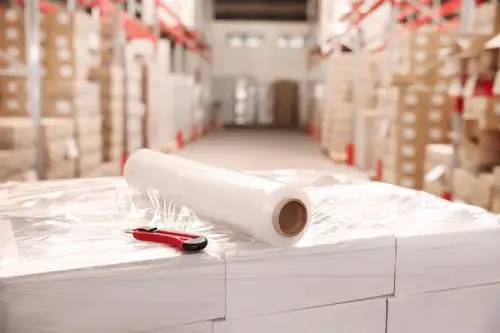
Polythene sheeting, also known as polyethylene sheeting, poly sheeting, plastic sheeting, plastic film, or poly film, is a type of plastic film made from petroleum. It is a highly versatile product used in a wide variety of applications.
This plastic film is nearly completely waterproof, but allows for the passage of oxygen, carbon dioxide, and flavourings. It can come in clear, translucent, or opaque form, making it suitable for a wide range of functions.
Typically, polythene sheeting is sold in rolls, although it can also be found in boxes of cut sheets. Various additives can be incorporated to enhance its functionality, such as fire retardants, UV inhibitors for outdoor use, anti-static properties for use on printed circuit boards, high strength, and high or low slip. It can also be made from virgin grade, BRC approved food grade, or recycled polythene, and may even contain volatile corrosive inhibitors to prevent rust formation on the item it is covering.
How is Polythene Sheeting Used?
Polythene sheeting is a versatile plastic film that has become a staple material in various industries. Its waterproof and protective properties make it suitable for an extensive range of applications. Here are some of the most common uses of polythene sheeting:
1. Construction
Polythene sheeting is widely used in the construction industry as it is durable and provides effective protection against moisture. It is used as a damp proof membrane to prevent water penetration in walls and floors. It is also used as a temporary roof covering during construction or renovation, providing a barrier against the elements.
2. Agriculture
In agriculture, polythene sheeting is used for various purposes, including crop protection, ground warming, and greenhouse covers. The sheeting can be used to create cloches to protect seedlings from frost or to create a warm environment to promote growth.
3. Packaging and Storage
Polythene sheeting is an excellent material for wrapping and protecting items during storage and transit. It is often used to cover furniture, electronics, and other items, providing a barrier against moisture, dust, and other debris.
4. Painting and Decorating
Polythene sheeting is a popular choice for protecting surfaces during painting and decorating. It can be used to cover floors, furniture, and other surfaces to prevent damage from paint drips or spills.
5. Color Coding
Polythene sheeting comes in a range of colors, making it useful for color coding in various applications. For example, different colors can be used to distinguish between different products or to mark different areas in a facility.
6. Branding
Polythene sheeting can be printed on, making it an effective branding tool. Companies can print their logo or information on the sheeting to increase brand awareness and promote their products or services.
7. Emergency Preparedness
Polythene sheeting is also a useful material for emergency preparedness. It can be used to create temporary shelters, cover damaged roofs or windows, and provide a barrier against the elements.
Poly sheeting is a versatile material that has a broad range of uses. Its durability and waterproof properties make it an essential material in various industries, and its ability to be printed on and color-coded makes it a valuable branding tool.
Differing Thicknesses

Polythene sheeting is available in varying thicknesses, which are measured in gauge (imperial) or microns (metric). The higher the gauge or microns, the thicker the film. Different thicknesses are suitable for different applications.
Light-duty polythene sheeting is very thin, approximately 86 microns, and is commonly used as a dust cover or for protection during painting or spraying.
Medium-duty polythene sheeting, approximately 125 microns, is useful for general protection and for covering large items like furniture. It is also suitable as a floor protector during painting and decorating, as well as for wrapping when storing or moving items. Gardeners use it for cloches or ground warming.
Heavy-duty sheeting is around 250 microns and is used when more robust protection is required, typically in construction or industrial applications. It is ideal for use as a damp proof membrane, temporary roof covering or window repair, for sealing off rooms or protecting countertops, and for protection against the weather. Additionally, it is suitable for heavy-duty wrapping during storage or transit.
Colours and Tints of Polythene
Polythene sheeting is available in clear, coloured, or tinted forms and comes in a range of colours suitable for colour coding. It can also be printed on for branding or information purposes. Black plastic sheeting is more resistant to UV light exposure and therefore will not deteriorate as quickly as other colours when exposed to sunlight.
Rolls of polythene sheeting are available in various sizes (Abbey Polythene supplies rolls up to 4 meters wide) and can be centre folded or multi-folded for easy use and storage. They may also be supplied with perforations to make it easier to tear lengths of sheet from the roll. Punched holes or micro-perforations can be added as well, with the latter allowing the film to breathe and preventing it from misting or fogging up.
To learn more about Abbey Polythene’s range of polythene sheeting, click here, or contact us to discuss your requirements and receive a no-obligation quote.